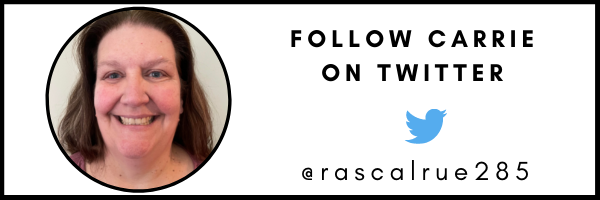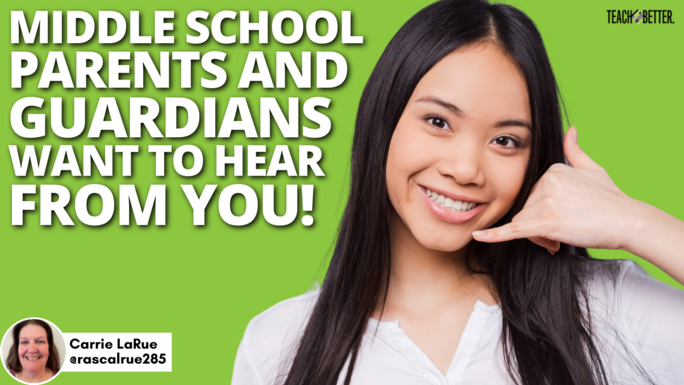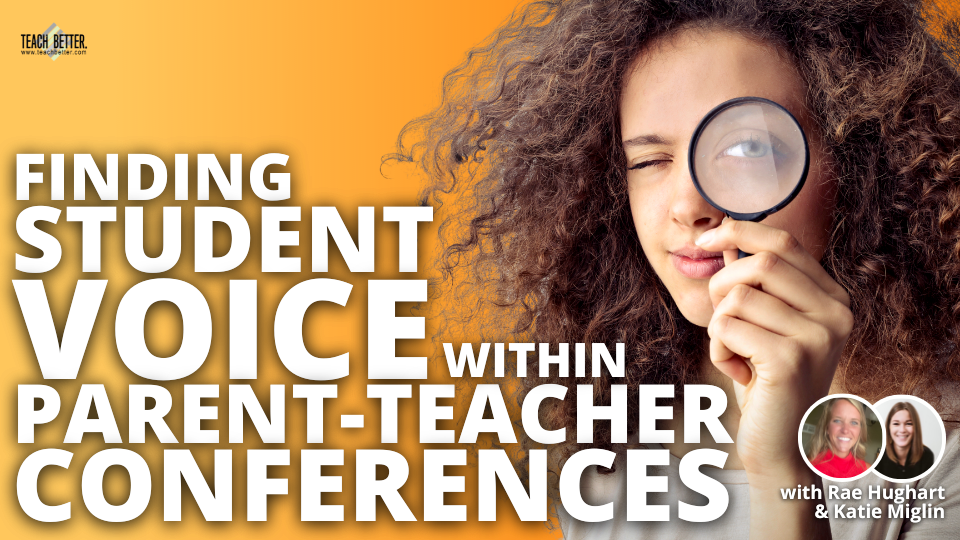TL;DR:
- Middle school students aren’t great communicators with their parents.
- As teachers, we have to facilitate that communication by providing adults at home with information without overwhelming them.
- Let’s make that communication positive!
Developmentally, we know middle school students, particularly older middle school students, are beginning to explore who they are apart from the adults with whom they live. While the adults with whom they live understand this is normal, it can be confusing and frustrating. For middle school teachers who are trying to help students develop that appropriate independence, it can be confusing and frustrating. When it comes to communication, how much is enough, too much, or too little?
The grade level impacts how you communicate.
Adults at home (AAH) have a variety of wants and needs. Some, especially those who are experiencing middle school for the first time and are used to communications from an elementary school, may want/need more than an AAH for an 8th grader. Knowing your clientele helps. If you have 6th graders, when and what you communicate home may be different than if you have 8th graders.
I teach only 8th grade. The number of parents at conferences who thanked me for the information I send home truly shocked me. Rarely do I hear anything back from them (I have 100 students, so I am thankful that not each AAH hits reply!). I have also been surprised at the number of students who mention that their AAH talked to them about the information I sent home. I wasn’t sure if it impacted anyone.
When I taught 6th grade, I usually sent something home every other week—just an update on what we were doing or an update on something that was upcoming. It went over well. For 7th grade parents, I sent something every third week or even monthly toward the end of the school year. With 8th grade, the communication home is less frequent but is still relevant.
I truly think the majority of families want to be involved; they just don't know how at the secondary stage. Click To TweetWhat do I tell the parents?
My very first communication is a “Welcome to Classroom 210,” and I try to send that out by the end of the second week (Yes. It’s a hectic time for all of us, but I don’t send this on paper so it doesn’t get misplaced). It has a little bit about me (this is where we start relationship building!), a little bit about how the class is conducted, a little bit about my homework/practice work philosophy, and how scores (we’re standards-based currently) are earned. It has my contact info and when I can answer a phone. I include that email is truly the best way to reach me as I can respond throughout the day. If I had a classroom social media (TikTok, Twitter, Instagram, Facebook), I’d include that here, too.
Right after our open house, I send out the Google form asking if they want Google Classroom updates; if they do, I ask they provide that email. Some parents have signed up for these previously; that info often travels to other classes. Some of the AAH remember signing up. Some have no clue they did. And some don’t want this information. I want to make sure to honor these wishes. If an AAH doesn’t respond to the form, I do not invite them to receive the summaries. Right now, it is a big deal in my district to make sure parents know how to find information from Google Classroom. So it’s great that I can show I’ve reached out (with one reminder) about this.
Communication about their learning.
About the time I introduce standards to students (we do some pre-assessments, district-wide normed testing, and other housekeeping items the first few weeks so it isn’t all happening at the same time at the beginning of school), I send home a fact sheet on the standard. This includes what the standard is, why we teach it, vocabulary covered, practice events planned (like writing paragraphs, completing group practices, IXL, etc.), and how the standard will be assessed. We usually have two related standards at a time, so I send these as a link. This happens all year long—not just at the beginning of the year.
One week before the assessments, I send an email to AAH letting them know when the assessment is planned and how it will be given. In our department, we think of mastery level learning as identifying (as one would see on our state assessment) and exemplary as creating. Our mastery level is assessed through multiple-choice, and our exemplary performance is usually something the student writes. This is where I’ve been most surprised. I recently had to change an assessment date because of a family emergency. I sent an email before school started; when I told students, several said their AAH had already told them.
How do I reach parents?
My go-to is email. The parents I’ve spoken to would prefer this or a text. I typically want to say more than I can put in a text, so I email.
In addition to emailing, I’ve tried using the text program Remind. It requires parents to sign up. While they do this for coaches, I didn’t have great success with it. I tried it; it didn’t go over with my clientele despite them having already signed up for it.
My principal sends videos, and we send monthly departmental updates in a video format (all parents in the school receive the same video that highlights all three grade levels). This is pretty new, and we haven’t had much feedback.
I’m the first to tell you I don’t call AAH often. I’m at school during their work hours. My principal doesn’t want me to have personal conversations throughout the day; many AAH also have a workplace where a personal conversation is difficult. If an AAH specifically requests a phone call, I try to make sure we have a set time that works well for all included.
None of this addresses the social media accounts my school uses—Facebook, Instagram, TikTok, and Twitter. I don’t consider those communications from me to AAH as our entire community sees them.
[scroll down to keep reading]Why do this?
If an AAH doesn’t want the information, it is simply deleted. No feelings hurt. No resources wasted (just my time to click their email address, and that’s pretty small). For those who do want it, I’ve begun building a positive relationship. I’ve provided a way for AAH to interact with their students by asking specific questions, like “I’m not familiar with the term central idea. Could you tell me what it is?” rather than, “How was your day?”
I have been very surprised at the number of AAH who tell me how thankful they are to know what their student is learning in class, and they wish other teachers would give them that info.
Communication home is a huge goal in my district. The district admin just requested (and got) a communications director who is in charge of press releases and district emails. I think of myself as the communication director for my classroom. It’s on me that AAH know what’s going on. If I can keep AAH informed, I have fewer complaints because they were informed. I truly think the majority of families want to be involved; they just don’t know how at the secondary stage.
By far, though . . .
The absolute best communication home is the positive email telling the AAH something wonderful about their child. It isn’t always something big that happens—sometimes it’s just a comment on the student’s respect for others shown. Sometimes it’s the extra effort on getting something right. Sometimes it’s that the student touched my heart or made me laugh.
The relationships made by communication and the concerns this has diminished have been worth every single second I’ve spent on it. I’m building goodwill with AAH; I’m trying to help them talk with their student. As far as I am concerned, it’s a win-win!
About Carrie LaRue
Carrie LaRue is a second-career teacher at Royster Middle School in Southeast Kansas, where she has the privilege of instructing 8th graders in reading and writing. After a short stint in journalism, she returned to college to earn a certification in education and went on to earn a Master’s in Literacy from the University of Missouri. She is passionate about creating strong relationships with students (#reachbeforeteach) and their families. Her students know she loves to read, cook, travel, and do counted cross-stitch when she isn’t teaching them.




